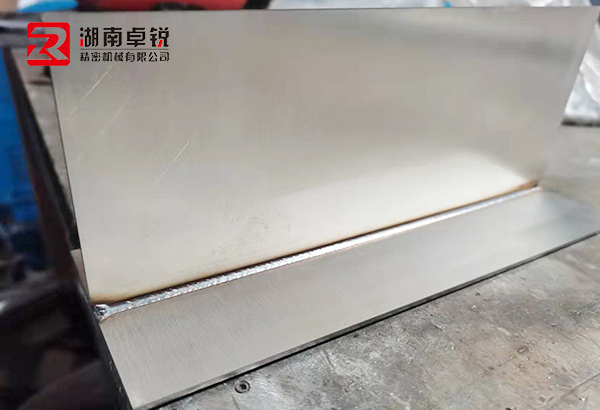CNC Machining is a method of machining parts using computer numerical control (CNC) machine tools. The following are some key aspects and steps of CNC part processing: Design and programming: Firstly, it is necessary to design and program the 3D model of the part. This is usually done using CAD (Computer Aided Design) software, which is then converted into a programming language that CNC machines can understand, such as G-code.  Machine Tool Selection: Choose a CNC machine tool suitable for machining parts. This depends on the material, size, complexity, and precision requirements of the parts. Material preparation: Prepare the raw materials to be processed and fix them on the machine tool. Machine tool settings: Set the parameters of the machine tool according to programming instructions, such as cutting speed, feed rate, cutting depth, etc. Processing process: Start the CNC machine and start processing according to the preset program. The machine tool will automatically move the cutting tool and perform cutting according to the programmed path. Monitoring and adjustment: During the machining process, it is necessary to monitor the operating status of the machine tool to ensure everything is normal. If necessary, the processing parameters can be adjusted to optimize the processing effect. Inspection and completion: After processing, inspect whether the parts meet the design requirements. This usually includes checks on dimensional accuracy, surface quality, and other aspects. If the requirements are met, the part processing is completed.
Machine Tool Selection: Choose a CNC machine tool suitable for machining parts. This depends on the material, size, complexity, and precision requirements of the parts. Material preparation: Prepare the raw materials to be processed and fix them on the machine tool. Machine tool settings: Set the parameters of the machine tool according to programming instructions, such as cutting speed, feed rate, cutting depth, etc. Processing process: Start the CNC machine and start processing according to the preset program. The machine tool will automatically move the cutting tool and perform cutting according to the programmed path. Monitoring and adjustment: During the machining process, it is necessary to monitor the operating status of the machine tool to ensure everything is normal. If necessary, the processing parameters can be adjusted to optimize the processing effect. Inspection and completion: After processing, inspect whether the parts meet the design requirements. This usually includes checks on dimensional accuracy, surface quality, and other aspects. If the requirements are met, the part processing is completed.
Hello! Welcome to EMAR company website!
 English
English » »
» »
 Spanish
Spanish Arabic
Arabic Spanish Basque
Spanish Basque Portuguese
Portuguese Belarusian
Belarusian Japanese
Japanese Russian
Russian Icelandic
Icelandic Bulgarian
Bulgarian Azerbaijani
Azerbaijani Estonian
Estonian Irish
Irish Polish
Polish Persian
Persian Boolean
Boolean Danish
Danish German
German French
French Filipino
Filipino Finnish
Finnish Korean
Korean Dutch
Dutch Galician
Galician Catalan
Catalan Czech
Czech Croatian
Croatian Latin
Latin Latvian
Latvian Romanian
Romanian Maltese
Maltese Malay
Malay Macedonian
Macedonian Norwegian
Norwegian Swedish
Swedish Serbian
Serbian Slovak
Slovak Slovenian
Slovenian Swahili
Swahili Thai
Thai Turkish
Turkish Welsh
Welsh Urdu
Urdu Ukrainian
Ukrainian Greek
Greek Hungarian
Hungarian Italian
Italian Yiddish
Yiddish Indonesian
Indonesian Vietnamese
Vietnamese 简体中文
简体中文 Haitian Creole
Haitian Creole









